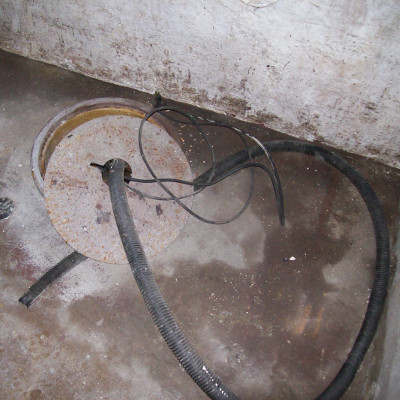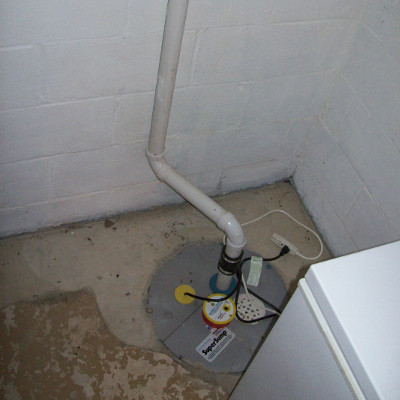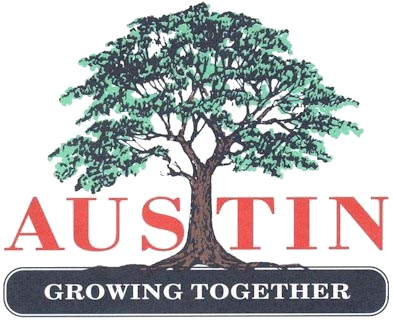About Inflow and Infiltration (I/I)
The sanitary sewer system in your community was designed to convey domestic and commercial wastewater to the wastewater treatment plant, where pollutants and wastes are removed before the water is discharged to the environment. On the other hand, rain water and ground water, called 'clear water', typically does not need to be treated. Clear water should go to the ground surface or storm sewer and flow into receiving streams and lakes. Clear water should not go into the sanitary sewer.
Excess clear water in the sanitary sewer collection system leads to unnecessarily high flows in the sanitary sewer. These high flows can result in basement sewage backups, bypassing of untreated wastewater into receiving streams, or increased taxpayer costs to construct and maintain a larger-than-necessary collection system.
The City engages in regular maintenance to correct cracks and other defects in pipes and manholes to reduce clear water infiltration into the sanitary sewer collection system. However, a major source of clear water is generally on private property: clear water that is collected by roof drains, sump pumps, seepage collection systems ("beaver drains") and foundation drains.
A few sump pumps improperly connected to the sanitary sewer make a significant difference to a community's collection system. A typical sanitary sewer pipe in a residential neighborhood is an 8" diameter pipe with a typical capacity of 350 gallons per minute (gpm). This is plenty of capacity if only domestic wastewater entered the pipe. However, add a few sump pumps that can discharge between 20 - 100 gpm apiece, and the pipe could quickly become overloaded, potentially leading to backups in that neighborhood.
So the City of Austin, through its consultant WHKS & Co., will be conducting sump pump inspections to verify that sump pumps, roof drains, and other clear water sources are not connected to the sanitary sewer system.
The goal of this program is to remove clear water from the sanitary sewer collection system, which will reduce the potential for sanitary sewer backups, improve public health, and extend the service life of the sanitary sewer collection system and treatment plant, which can ultimately lead to lower taxpayer costs.
About the Inspections
Timeframe: Inspections in the Northwest area will take place during 2024. All buildings with sewer accounts (approximately 700 buildings) will be inspected during this time.
The City will be separated into sectors, designated by a color to stagger inspection times throughout 2024. Map
Scheduled Appointments: To ensure resident safety, all inspections will be scheduled. No door-to-door inspections will be conducted. Inspections will be completed between the hours of 7:00 am and 7:00 pm.
Web or Telephone: Both a telephone number and a web based option are available for ease of appointment scheduling. The secure web-based scheduling system allows residents to schedule an appointment. Residents who do not want to use the Internet can still call our toll free telephone number to schedule an appointment.
Identification of Inspectors: WHKS inspectors will be wearing an identification badge with the WHKS and City logos, as well as WHKS clothing and vehicles. If you have any questions on the identity of the inspectors, please feel free to contact us.
The Inspection: A typical inspection is completed in under 15 minutes. There must be an adult occupant present during the inspection. The inspection will consist of observing five items:
- Exterior Grading: Does exterior grading slope towards the building?
- Roof Drains: Are there roof drain downspouts that go into the ground?
- Basement: Is there a basement?
- Seepage Collection System (Beaver System): Is there a seepage collection system? If present, does it discharge into a sump pit (proper) or the floor drain (improper)?
- Sump Pit/Sump Pump: Is there a sump pump? If present, does it discharge outside the basement through rigid pipe (proper), discharge to the floor drain (improper) or discharge to either location through a flexible hose (improper).
The inspector will photograph the interior plumbing and exterior of the home with permission of the occupant. The inspector will also make a sketch of the location of the 5 items listed above. If a sump pump or roof drain discharge location cannot be determined by visual inspection, it shall be noted and the appropriate City personnel will follow up with the occupant at a later time to determine the discharge location. Finally, both the inspector and occupant will need to sign the inspection record to verify that the inspection took place.
If an improper connection is found, the inspector will give a Violation Notice to the occupant and explain the necessary steps and timeframe for correction. A reinspection must then be scheduled and conducted to verify that the correction has been made.
| Improper connection: Flexible Hose | Proper connection: Rigid Discharge Pipe To Exterior. |
 |
 |
